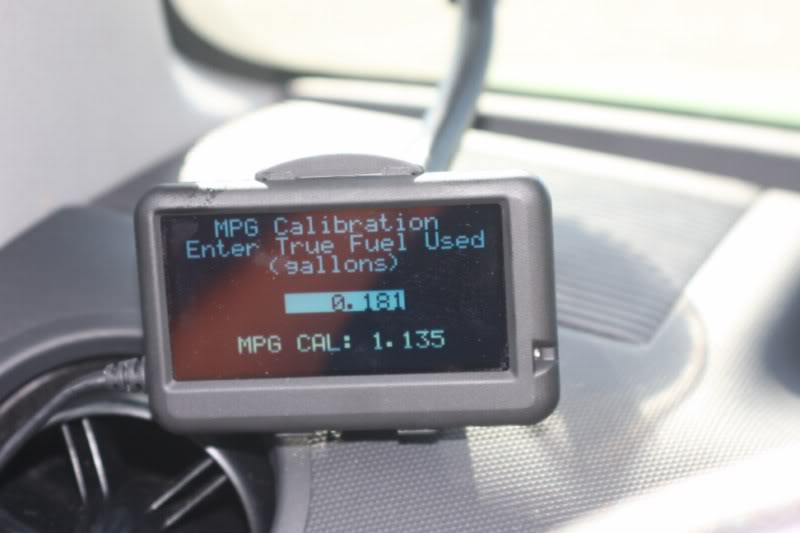I bought an
Ultra-gauge at an introductory price of $39.95 after shipping, and after a $9 rebate.
I drove my test loop in my xB with the UltraGauge and ScanGauge II, back-to-back. The UG is a fully-capable drop-in replacement for the SG. It behaves nearly identically to the SG, reporting the same distance and mpg as the SG, both under cruise control, and under full-FAS P&G conditions. At the end of my loop, under cruise control, the UG and SG displayed 9.6 and 9.7 miles. I adjusted calibration on the UG, based on the same fuel consumption, and it came out the same 13.5% calibration factor as the SG.
One quirk of the UG is its trip mpg average display is the impg display for the first minute after you do a trip gauge reset. At first, I thought it was a distance issue, but it turns out to be a time issue. Instead of an average value, the display jumps all over the range, from 15 mpg climbing hills, to 200+ mpg descending them, until that first minute passes. Another quirk is the UG keeps accumulating trip mpg, miles, and fuel consumed until you reset them manually from the gauge menu. Following photos show the main and gauge menus.


The only visible difference with P&G is the UG displays 000 mpg during a FAS, and the SG displays 9999 mpg. Both UG and SG displayed 9.3 miles driven under P&G. I got about 53 mpg in cruise control with both SG and UG on the 9.6 mile test drive, and 62.0 mpg P&Ging the same route. Next two photos show UG FAS and pulse displays. Note the open and closed loop displays, respectively, in the upper right portion of the UG.


I love the quick interchangeability of the UG. I plugged it into my wife's Hyundai, and it scanned the KWP2000 protocol and found 33 gauges within a minute. I plugged it into my Scion, and it found an 11 bit CAN protocol and 44 gauges, including barometric pressure, again within a minute. In order to get barometric pressure shown for the Scion with the SG, I had to experiment with the xgauge coding for all the listed protocols, a process that probably took an hour. Plus I spent more time testing the SG for my SE-R and my wife's Hyundai, only to find they don't display barometric pressure. With the SG, you have to program every possibility, knowing that if LF4 works, LF1-3 probably won't work.
After the UG does its quick scan, it displays its software revision # (mine is ver. 1.0 dated 8/13/10, just a week before I ordered mine), # gauges, whether or not the car has a fuel sensor, its type of mpg sensor (MAF or MAP), and its OBDII communication protocol. Following photo shows completed scanning display, and has a size comparison of the SG and UG. The display shows 43 gauges, but the initial scan said 44 were found. The missing gauge is open/closed loop.

You go to the main menu's Vehicle Setup choice to set engine size, fuel tank size, and calibration. Calibration is a breeze, because you can enter fuel in .001 gallon increments. So after my 9.6 mile drive, I was able to enter .181 gallons of gas, and get a 13.5% calibration factor long before I could do it with the SG. As I mentioned, the calibration value is the same for both the SG and UG in my Scion, probably indicating they use the same method of calculating mpg for MAF systems.

Another improvement of the UG over the SG is it warns you of pending trouble codes. My xB routinely gives a nonsense P0000 TC. The UG started showing me a pending trouble code 25 miles ago, and gave me the option of disabling the alarm. I'm letting it run to see how it handles it.
The UG is a better hypermiling tool than the SG, at roughly 1/3 the price.